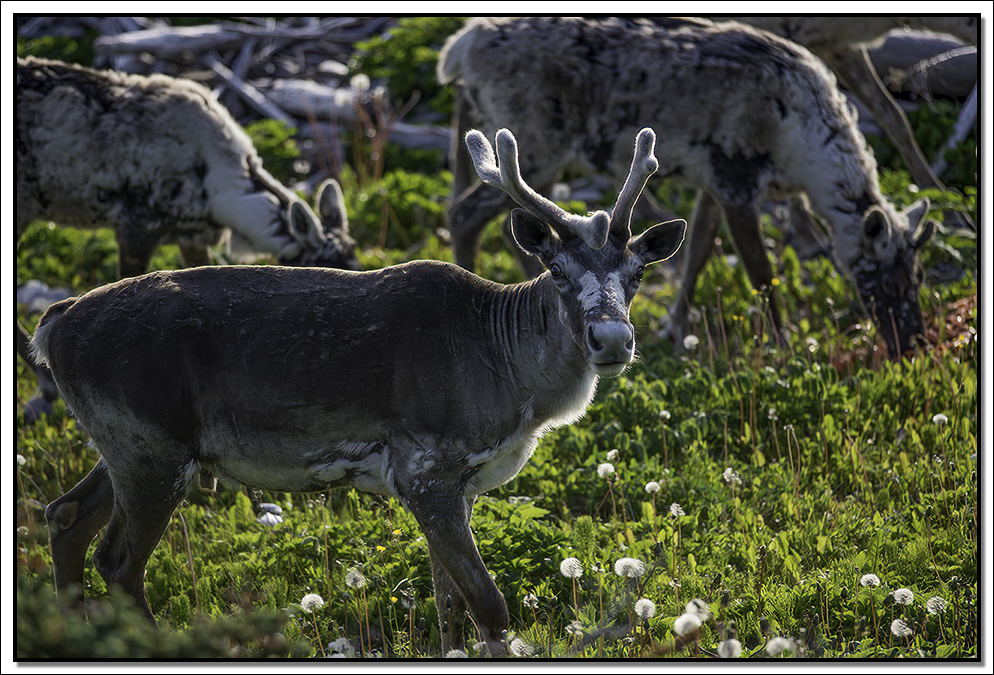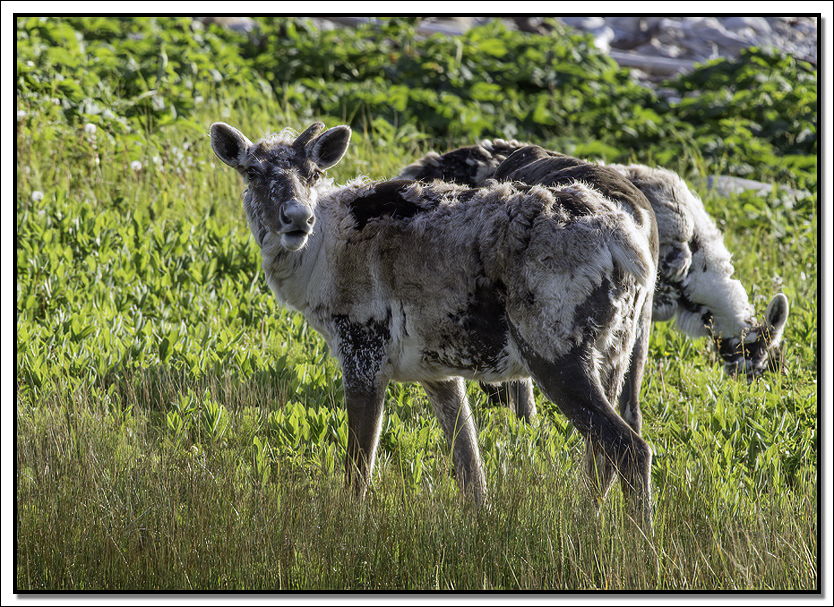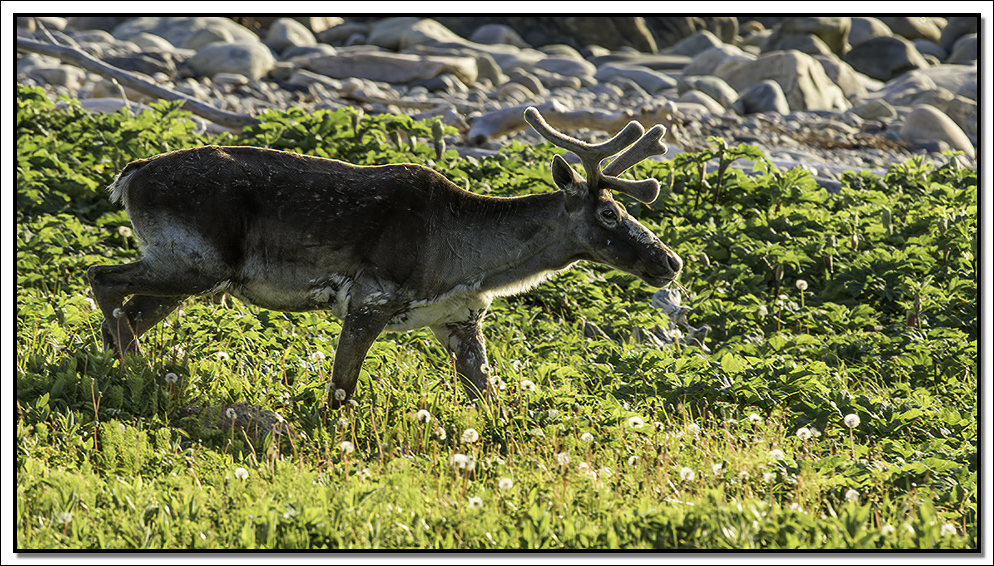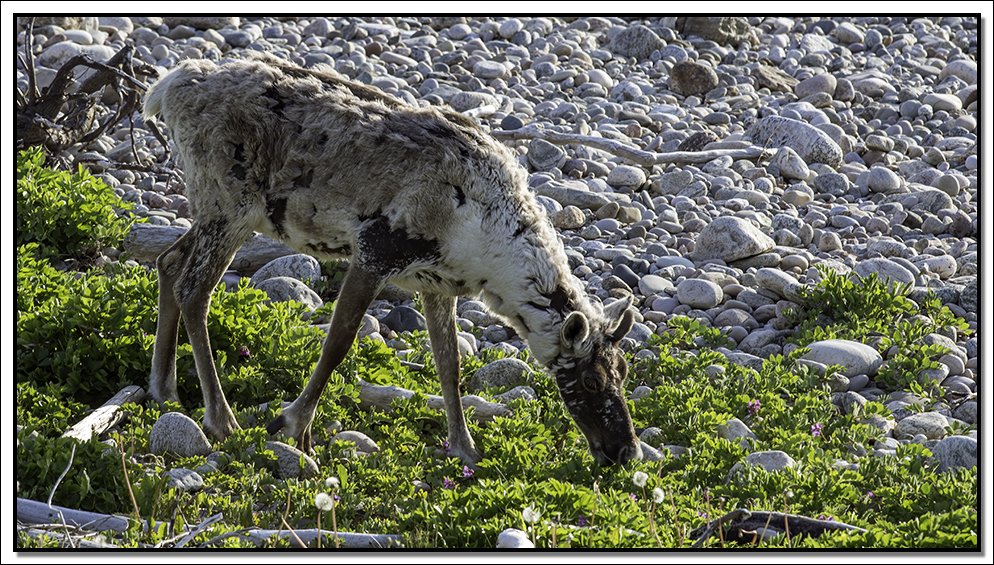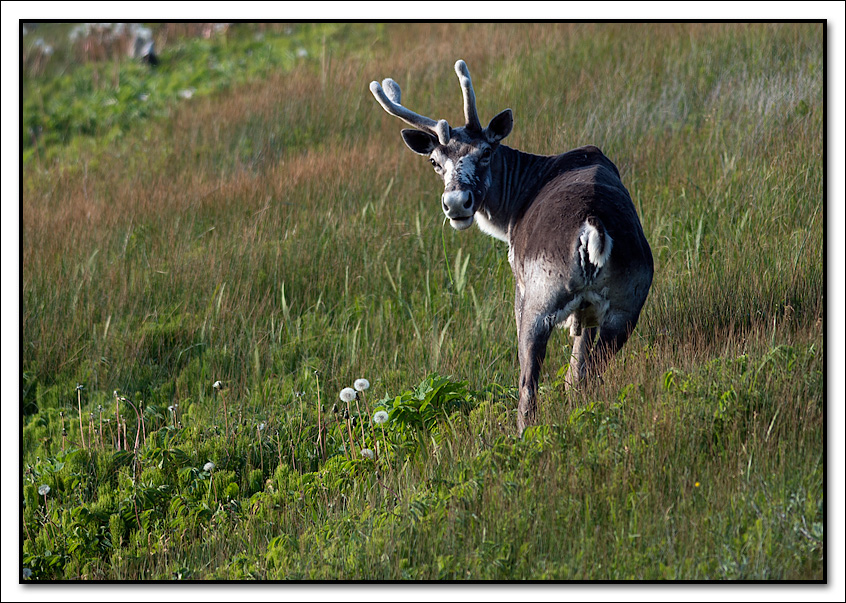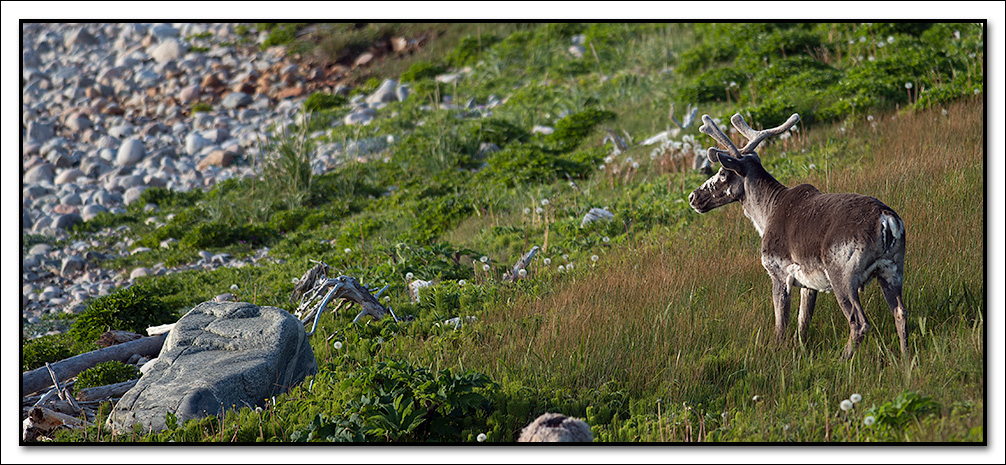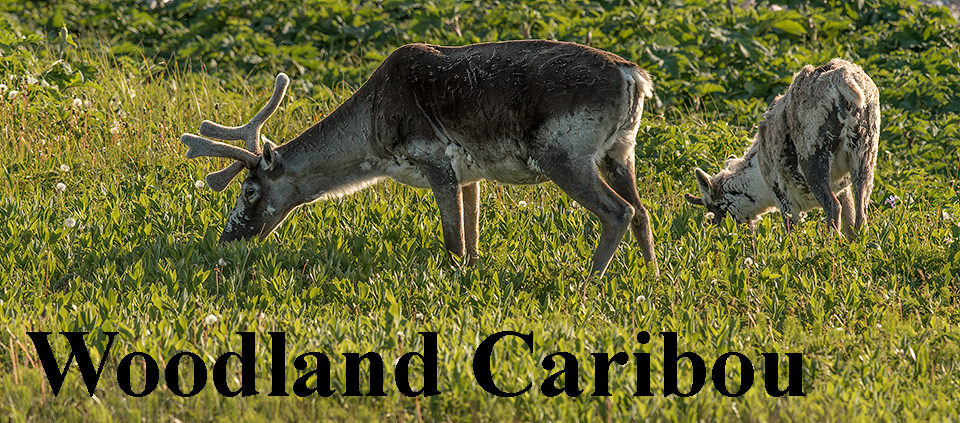
Woodland Caribou (Rangifer tarandus) - Threatened
We have only had the thrill of seeing Woodland Caribou in the wild once. We were in Gros Morne National Park in Newfoundland when we came across a small herd. In North America, we call them Caribou, while in Europe and Siberia, they are known as Reindeer. They have a range that is circumpolar.
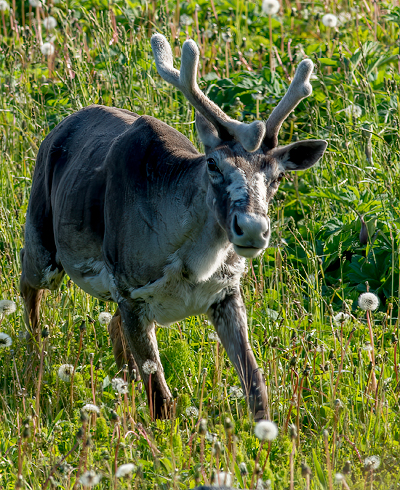 The most famous caribou are the small herd of flying reindeer that are responsible from pulling Santa Claus's sleigh all over the world every Christmas Eve.
The most famous caribou are the small herd of flying reindeer that are responsible from pulling Santa Claus's sleigh all over the world every Christmas Eve.
Most of what learnt about Caribou was from a presentation at our local Field Naturalist Club where a speaker, Jim Schaeler, discussed Caribou and the problem with the dramatic decline the populations. His talk was extremely interesting and informative. Woodland caribou in Canada are listed as threatened under the federal Species at Risk Act, as well as under provincial legislation in Ontario, British Columbia, Alberta, Manitoba, Labrador, Northwest Territories and Quebec. Some subspecies are very rare and at least one is already extinct.
Woodland Caribou inhabit large and undisturbed forests, wetlands, and bogs in every province of Canada except the Maritimes where the species was extirpated in the 1920s.
Caribou undergo seasonal migrations between its summer and winter feeding grounds. The caribou is well adapted to its environment. Its short, stocky body conserves heat, its long legs help it move through snow, and its long dense winter coat provides effective insulation, even during periods of low temperature and high wind. The muzzle and tail are short and well haired. Large, concave hooves spread wide to support the animal in snow or muskeg, and function as efficient scoops when the caribou paws through snow to uncover lichens and other plants.
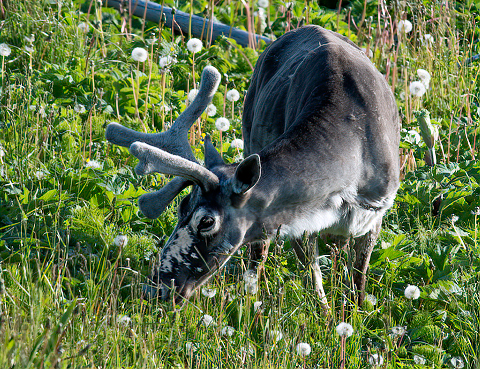 The most important food for caribou is fruticose lichens, but grasses, sedges, moss and fungi contribute to the summer diet. In the winter, in addition to arboreal lichens, they eat buds, leaves and bark of both deciduous and evergreen schrubs.
The most important food for caribou is fruticose lichens, but grasses, sedges, moss and fungi contribute to the summer diet. In the winter, in addition to arboreal lichens, they eat buds, leaves and bark of both deciduous and evergreen schrubs.
Canada has three types of Caribou – Peary, Barren-ground, and Woodland. These types are sub-classified by eco-type, based on where they live and how they behave.
Caribou need large areas of undisturbed old-growth woodland. This is directly connected to their survival as these forests not only provide a necessary food source but they also provide protection from predators such as wolves, lynx, Cougars, Coyotes, and bears. This also keeps them geographically separated from Moose and deer carrying meningeal brain worm, which is fatal to Caribou.
However, as industrial development pushes further north, the Caribou are running out of suitable territory. Logging operations, oil and gas exploration, and mining developments are cutting into these forests, opening up networks of roads and seismic lines that penetrate their isolated habitat and provide linear corridors for predators to travel. These roads and lines also enable recreational access by ATVs, snowmobiles, hunters, and poachers. Regenerated forest areas attract Elk, deer, and Moose, which prefer the tender shoots of young trees, increasing the chance of disease for caribou. Their presence, in turn, supports predators that also prey on Caribou.
Woodland Caribou are facing disturbance on all levels and low birth rates coupled with high calf mortality rates means populations are very susceptible to stress. Hopefully the governments recovery proposal plan will be taken seriously and the majestic Woodland Caribou will be properly protected.
